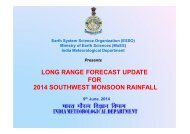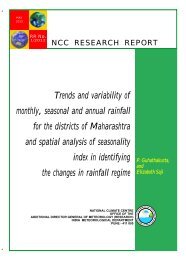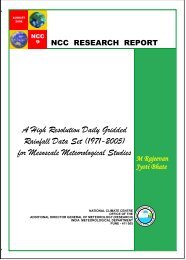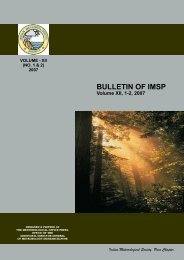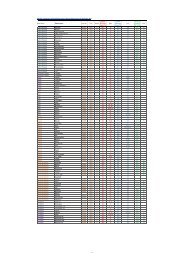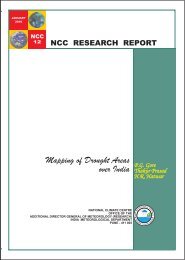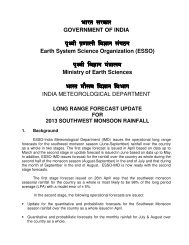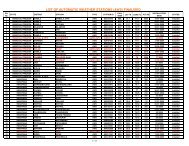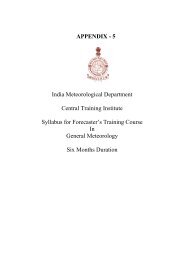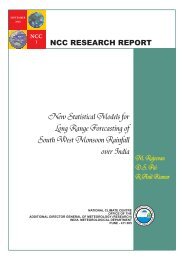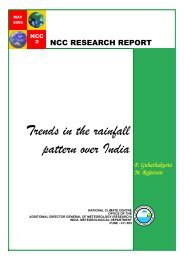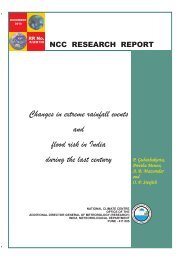Create successful ePaper yourself
Turn your PDF publications into a flip-book with our unique Google optimized e-Paper software.
53<br />
country. Surface dew point temperatures were falling over the Peninsula where<br />
the 24 hour changes were about -2°C to -6°C. The minimum temperatures were<br />
generally below normal over the country, being 2°C-4°C below normal over south<br />
Peninsula. Pressures also rose over the whole country during the previous<br />
24 hrs and the departures were of the order of +2 mb to +3 mb (refer to the<br />
auxiliary charts in Fig. 19.3). All these features indicated the prevalence<br />
of dry winter type circulation over the country.<br />
19.5 On the 10th, the low pressure area persisted over the southwest Bay<br />
of Bengal with a somewhat westward movement, while the low over the Laccadives<br />
area was weakening. There was a further fall in the dew points over central<br />
and south India. The minimum temperatures also decreased further over the<br />
whole of the Peninsula and they were 4°C to 5°C below normal in Andhra Pradesh<br />
and 2°C to 4°C below normal over the rest of the Peninsula (Fig. 19.6). There<br />
was little change in the wind flow pattern over the Peninsula in the lower<br />
troposphere. Weather continued to be dry over the whole country.<br />
19.6 The low pressure area over the Bay of Bengal moved further westwards<br />
and became well-marked on the 11th, when it was over the southwest Bay of<br />
Bengal off Sri Lanka (Fig. 19.7). Under the influence of this system, the<br />
upper air flow changed to easterly over the south Peninsula in the lower and<br />
middle troposphere (Fig. 19.8) and incursion of moisture took place into the<br />
south Peninsula; correspondingly the dew point and minimum temperatures rose<br />
over this area and the spell of dry weather was broken on the 12th.<br />
19.7 The tephigrams of Bangalore and Visakhapatnam for 9th and Madras and<br />
Trivandrum for 10th are given in Figs, 19.9 and 19.10 respectively. These show<br />
very dry and stable air. Madras even shows an inversion between 900 mb and<br />
800 mb and Visakhapatnam between 850 mb and 750 mb.<br />
19.8 This sequence highlights the following points:



